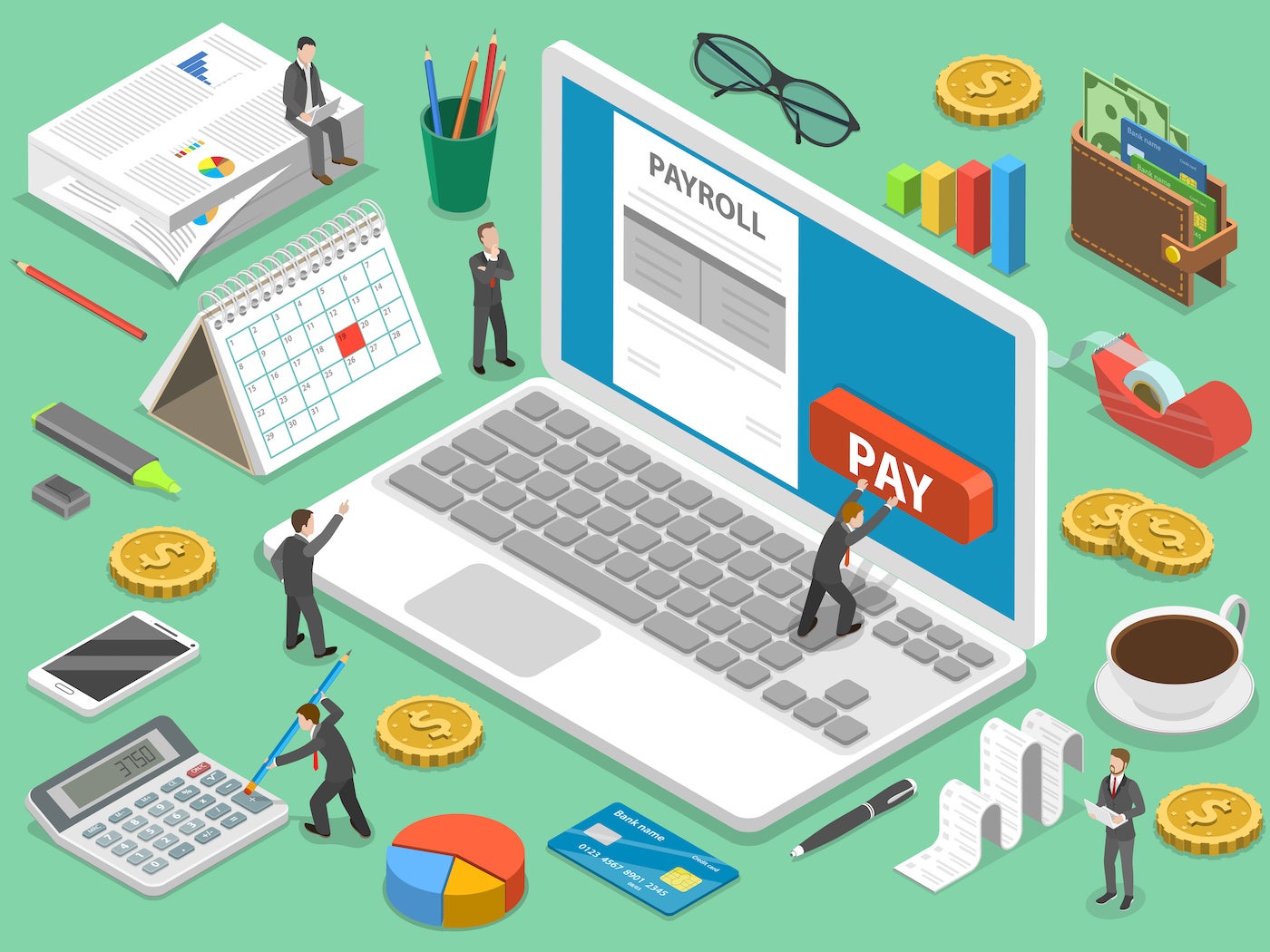
Both ADP and Paylocity serve broad human resource and payroll needs, but they target different types of businesses.
ADP is a goliath platform that can tackle any administrative need — for a price. It isn’t for beginners or those with smaller budgets.
Paylocity, on the other hand, is a more forgiving option. It also specializes in serving hourly employees and reducing turnover.
There are lots of other nuanced differences, so let’s explore both payroll software in depth.
Paylocity vs. ADP: Comparison table
| Paylocity | ADP | |
|---|---|---|
| Our rating | 4.6 out of 5 | 4 out of 5 |
| Starting price | Custom | Custom |
| International support | Yes, via a third-party contractor | Yes, in-house |
| Analytics | Somewhat detailed | More detailed |
| Third-party integrations | Approximately 400 | Over 500 |
| Ideal for… | Small to midsize businesses with hourly employees and more modest needs | Medium to large businesses with salaried workers and complicated needs |
| Visit Paylocity | Visit ADP |
Paylocity vs. ADP: Pricing
Paylocity
Paylocity only has custom pricing, so you’ll have to speak to a sales representative for more information.
However, Paylocity markets itself as a cost-effective solution for small to midsize businesses. It offers a finely customizable pricing model that allows businesses to select only the features they need. This flexibility can lead to significant savings, particularly for smaller organizations that may not require a comprehensive suite of tools.
Bottom line, if money’s tight, Paylocity is almost certainly the more affordable option.
ADP
ADP also leans heavily on customized plans and pricing, though its plan for very small businesses does have transparent pricing: Roll by ADP costs $39 per month plus $5 per employee.
However, if you need a bit more than just the basics, you may be looking at much steeper costs. ADP does pack a punch and can provide a ton of value — it just depends on whether you need that level of power for your business.
SEE: Payroll Services Comparison Tool
Paylocity vs. ADP: Feature comparison
Best payroll processing: ADP
ADP stands out for its advanced payroll features, including a comprehensive global payroll service that covers over 140 countries. It also offers lots of payment options, such as same- or next-day direct deposits and paper check printing. This array of options, combined with automatic pay runs and extensive auditing tools, places ADP ahead of Paylocity for businesses seeking a robust payroll solution.
Best user experience: Paylocity
Paylocity is celebrated for its modern, user-friendly interface. Following a significant brand overhaul, it introduced a more intuitive design, making navigation and payroll management simpler for users. This emphasis on a streamlined user experience, coupled with a modern interface and easy employee self-service options, earns Paylocity the top spot in this aspect.
Best managed services: ADP
ADP offers top-notch professional employer organization services. Human resource experts handle mundane tasks like payroll processing, benefits enrollment and compliance management. You choose how much to pass off or handle on your own.
Paylocity, in comparison, provides only consulting services. So, ADP is the far better option if you wish to outsource all kinds of tasks.
Best for employee morale: Paylocity
Paylocity is our pick for enhancing employee engagement and morale. It boasts boatloads of features that foster a vibrant, connected workplace culture. Some marquee features are psychologist-crafted employee surveys, social collaboration hubs and the innovative use of AI to create compelling company-wide communications. These tools can empower you to gather deeper insights into worker sentiment than other platforms.
Best for hourly employees: Paylocity
Paylocity’s time-tracking capabilities are robust and built with hourly employees in mind. The platform makes punching in and out a breeze via its mobile app or physical time clocks.
If you opt for in-person punching, the options are unusually good. For example, the company offers biometric time clocks complete with thermal imaging to detect workers with a fever. This innovative technology is helpful in detecting illness to preserve workforce or customer health.
Moreover, Paylocity offers comprehensive scheduling tools that grant personnel flexibility over their hours. Employees can view their schedules, pick up open shifts and request time off directly through the Paylocity app. Managers can easily monitor these transactions, saving time as staff work things out themselves. And when it’s time to crunch the numbers, the platform has superior hourly labor cost reporting compared to ADP.
Paylocity pros and cons
Pros of Paylocity
- Customizable pricing.
- Intuitive interface.
- Comprehensive yet easy-to-use HR suite.
Cons of Paylocity
- Limited global coverage.
- Plan customization comes with more complex setup for smaller businesses.
ADP pros and cons
Pros of ADP
- Designed to grow with your business.
- Global payroll.
- Full-service support from subject matter experts in legal compliance, HR and international operations.
Cons of ADP
- Potentially high costs.
- Options and customization can overwhelm smaller organizations or those with simpler needs.
Should your organization use Paylocity or ADP?
Choose Paylocity if . . .
- You need simpler software.
- You have a lower budget.
- You aren’t planning on international expansion.
Choose ADP if . . .
- You need complex support and a global reach.
- You’re looking for a comprehensive, powerful suite of services.
- You value established industry reputation and support.
Methodology
We carefully researched each platform’s features, pricing, customer service, ease of use and scalability. We also considered user reviews, overall value, long-term scalability and suitability for small businesses, among other factors.
Source of Article



